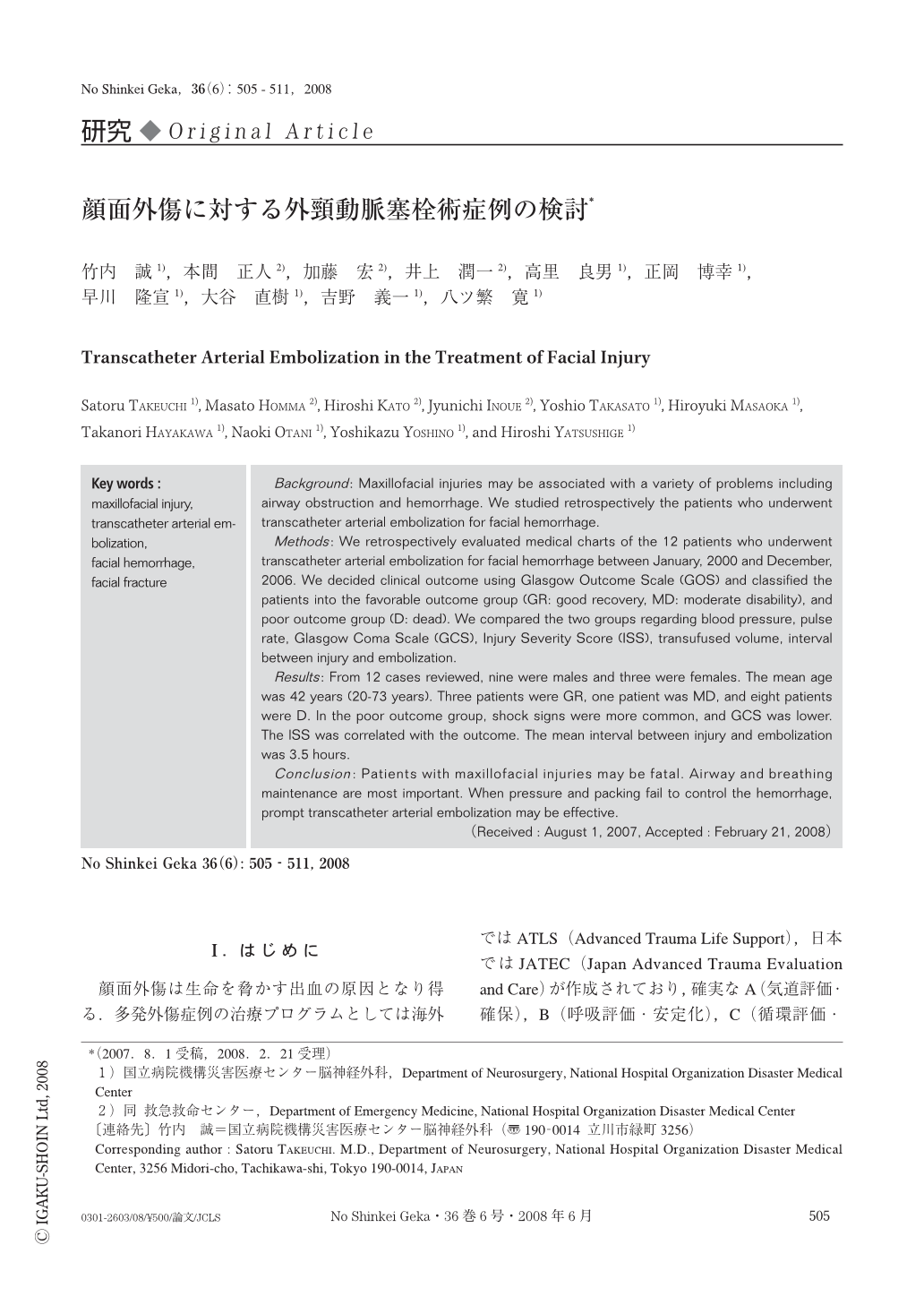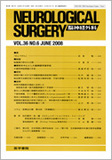Japanese
English
- 有料閲覧
- Abstract 文献概要
- 1ページ目 Look Inside
- 参考文献 Reference
Ⅰ.は じ め に
顔面外傷は生命を脅かす出血の原因となり得る.多発外傷症例の治療プログラムとしては海外ではATLS(Advanced Trauma Life Support),日本ではJATEC(Japan Advanced Trauma Evaluation and Care)が作成されており,確実なA(気道評価・確保),B(呼吸評価・安定化),C(循環評価・安定化)がまずなされるべき事項とされている8).顔面外傷における出血症例では,気道内出血流入による気道閉塞・換気障害により呼吸が不安定となるとともに,出血性ショックに陥る可能性がある.
われわれは,顔面外傷による出血症例に対して外頸動脈塞栓術を施行した12症例を経験した.これらの症例について検討するとともに,良好な転帰を得た2症例を代表提示し,外頸動脈塞栓術の適応,時期などについて考察したので報告する.
Background: Maxillofacial injuries may be associated with a variety of problems including airway obstruction and hemorrhage. We studied retrospectively the patients who underwent transcatheter arterial embolization for facial hemorrhage.
Methods: We retrospectively evaluated medical charts of the 12 patients who underwent transcatheter arterial embolization for facial hemorrhage between January, 2000 and December, 2006. We decided clinical outcome using Glasgow Outcome Scale (GOS) and classified the patients into the favorable outcome group (GR: good recovery, MD: moderate disability), and poor outcome group (D: dead). We compared the two groups regarding blood pressure, pulse rate, Glasgow Coma Scale (GCS), Injury Severity Score (ISS), transufused volume, interval between injury and embolization.
Results: From 12 cases reviewed, nine were males and three were females. The mean age was 42 years (20-73 years). Three patients were GR, one patient was MD, and eight patients were D. In the poor outcome group, shock signs were more common, and GCS was lower. The ISS was correlated with the outcome. The mean interval between injury and embolization was 3.5 hours.
Conclusion: Patients with maxillofacial injuries may be fatal. Airway and breathing maintenance are most important. When pressure and packing fail to control the hemorrhage, prompt transcatheter arterial embolization may be effective.

Copyright © 2008, Igaku-Shoin Ltd. All rights reserved.


